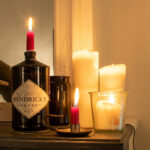
Nothing says cosy more than a candle burning on a cold, winter evening. However, they are unfortunately a major cause of house fires. Candles are something everyone enjoys especially at this time of year but wherever they are in the house it is important to use them safely.
Keep an eye on the candle
It is important to ensure the flame always remains within your line of vision and whenever you leave the room, even if it is just for a couple of minutes, it’s a good idea to extinguish the candle to be 100% safe and sure. If you have a habit of lighting candles and forgetting to extinguish them before bed, it might be a better idea to consider flameless candles so there is no fire hazard.
Keep candles away from any objects
Always keep lit candles away from furniture, curtains, beds, carpets, and anything else that could catch fire. Keep flames out of reach from children, this includes lower bookshelves or dressers.
Be sensible with how you burn your candles
Trimming the candle wick down to around ¼ inch or less when you decide to light the candle will take away some of the risk as long wicks can lead to wax dripping and very high, potentially dangerous flames. It is also important to ensure you’re placing your candle in the right candle holder for the candle you are using. Candle holders should be durable, fire-resistant, and large enough to catch any wax that drips off.
The Firechief range includes high-performance fire extinguishers, fire blankets, first aid kits, lithium-ion fire extinguishers for your home and leisure time. For more information, call us on +44 (0)330 999 0019 or email sales@firechiefglobal.com.
The information contained within this blog is provided solely for general informational and educational purposes and is not intended as a substitute for professional advice. Before taking any actions based upon this information, we advise the reader to consult any and all relevant statutory or regulatory guidance and where felt necessary to consult a qualified fire or industry regulation professional. The use or reliance on any information contained herein is solely at the reader’s risk.

